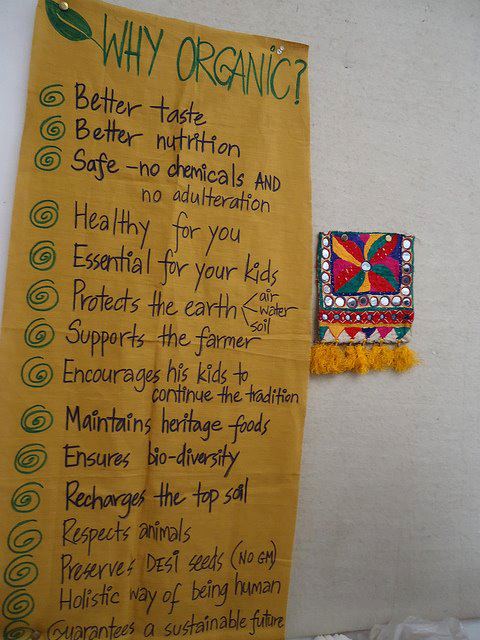being an organic indian
buying organic on a budget
We discussed the potential harmful effects of chemical pesticide and fertilizer residues on fruits and vegetables. Studies on their detrimental effects abound in the media and scientific journals, but finding organic produce on a budget can prove to be difficult.
The reality is that currently most organic products are premium goods because of the scarcity of farmers who grow produce the organic way. The market for organic produce is growing slowly but surely, and if you do your research you can find companies in Delhi that sell organic processed products, grains and pulses, fresh produce, medicine, and even beauty products at prices that would fit within your monthly budget if you are willing to prioritize the purchase of chemical- free produce.
However, if you are a health conscious person but are maybe not ready to commit to buying all-organic, you can make a priority list of the products you should buy organic. This will be easier on your budget, stomach, and mind. With fresh produce you must arm youself with knowledge of vegetables and fruits that are the most and least chemical intensive. A recent report describes the 12 crops with the most chemical residue, the Dirty Dozen, and the Clean 15, which need relatively little pesticide. This list was created in the United States, but these fruits and vegetables are common or becoming popular in India as well.
To avoid a chemical cocktail of at least 47 and as many as 67 different chemicals, you must seriously think of buying the organic versions of these vegetables and fruits:
Celery
Peaches
Strawberries
Apples
Nectarines
Blueberries
Capsicum
Spinach
Cherries
Potatoes
Grapes
Lettuce
The ones that bore the least amounts of chemicals were: onions, avocados, sweet corn, pineapples, mango, sweet peas, asparagus, kiwi fruit, cabbage, eggplant, cantaloupe, watermelon, grapefruit, sweet potatoes, and sweet onions. However be careful with fruits like mangoes, because in India they are sprayed with calcium carbide (an extremely poisonous cancer-causing chemical) to make them ripen faster.
Starting with the Dirty Dozen is a great way to shift your spending for vegetables and fruits that are better for you. You can continue buying the Clean 15 from your local sabziwallah. This shouldn’t stretch your budget, and you can eat easy knowing that your family is consuming significantly less chemicals in their daily diet. However organic will continue to be expensive until consumers demand organic and it becomes profitable for farmers to convert their fields. Also, consumers need to prioritize healthy eating in their budgets, instead of eating cheap chemically grown vegetables in order to buy a new handbag.





